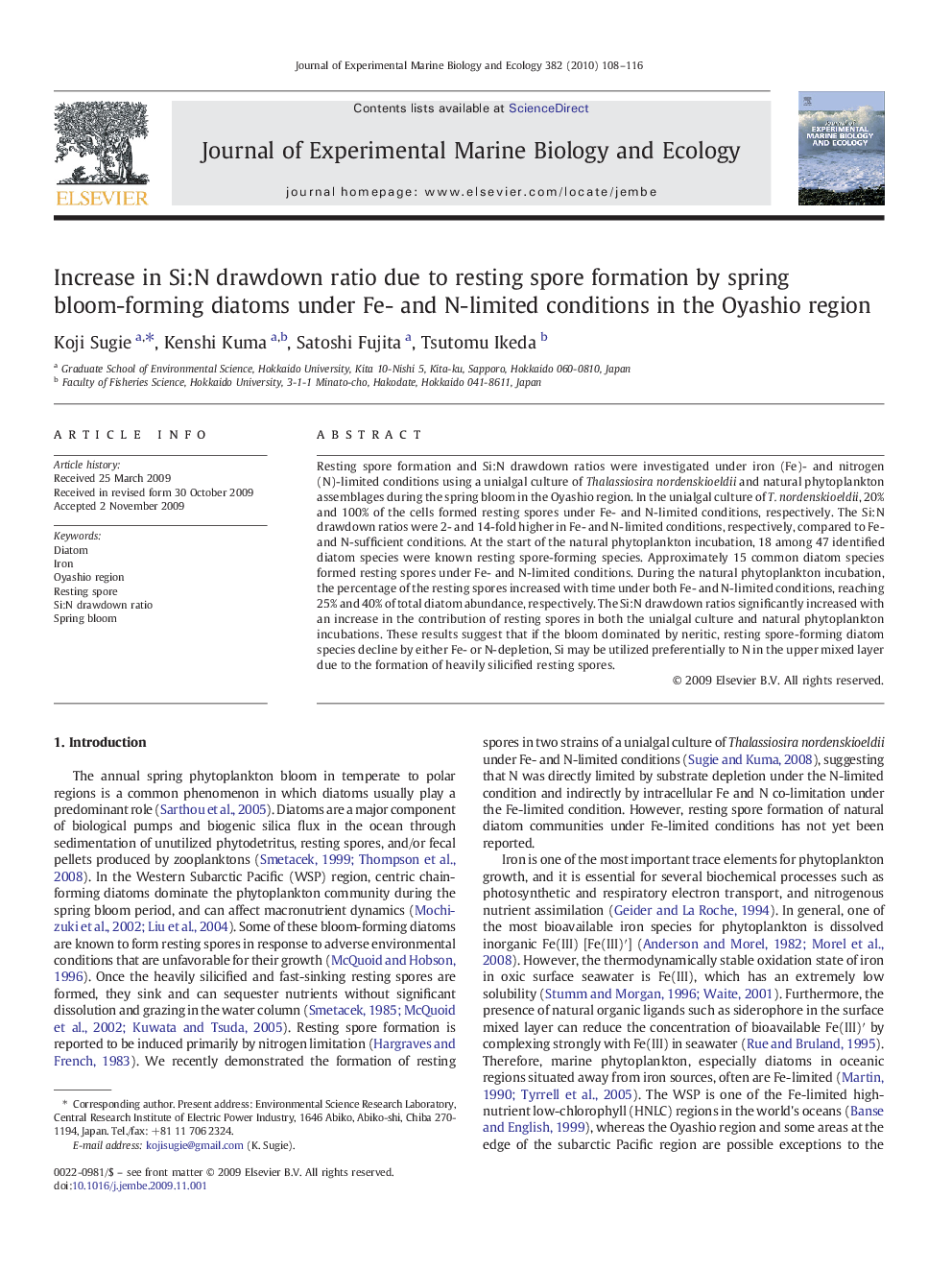| Article ID | Journal | Published Year | Pages | File Type |
|---|---|---|---|---|
| 4396676 | Journal of Experimental Marine Biology and Ecology | 2010 | 9 Pages |
Resting spore formation and Si:N drawdown ratios were investigated under iron (Fe)- and nitrogen (N)-limited conditions using a unialgal culture of Thalassiosira nordenskioeldii and natural phytoplankton assemblages during the spring bloom in the Oyashio region. In the unialgal culture of T. nordenskioeldii, 20% and 100% of the cells formed resting spores under Fe- and N-limited conditions, respectively. The Si:N drawdown ratios were 2- and 14-fold higher in Fe- and N-limited conditions, respectively, compared to Fe- and N-sufficient conditions. At the start of the natural phytoplankton incubation, 18 among 47 identified diatom species were known resting spore-forming species. Approximately 15 common diatom species formed resting spores under Fe- and N-limited conditions. During the natural phytoplankton incubation, the percentage of the resting spores increased with time under both Fe- and N-limited conditions, reaching 25% and 40% of total diatom abundance, respectively. The Si:N drawdown ratios significantly increased with an increase in the contribution of resting spores in both the unialgal culture and natural phytoplankton incubations. These results suggest that if the bloom dominated by neritic, resting spore-forming diatom species decline by either Fe- or N-depletion, Si may be utilized preferentially to N in the upper mixed layer due to the formation of heavily silicified resting spores.
